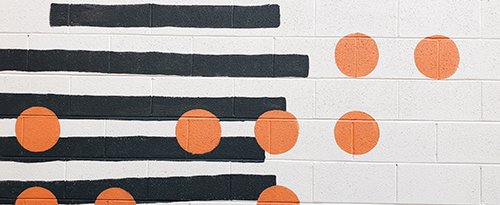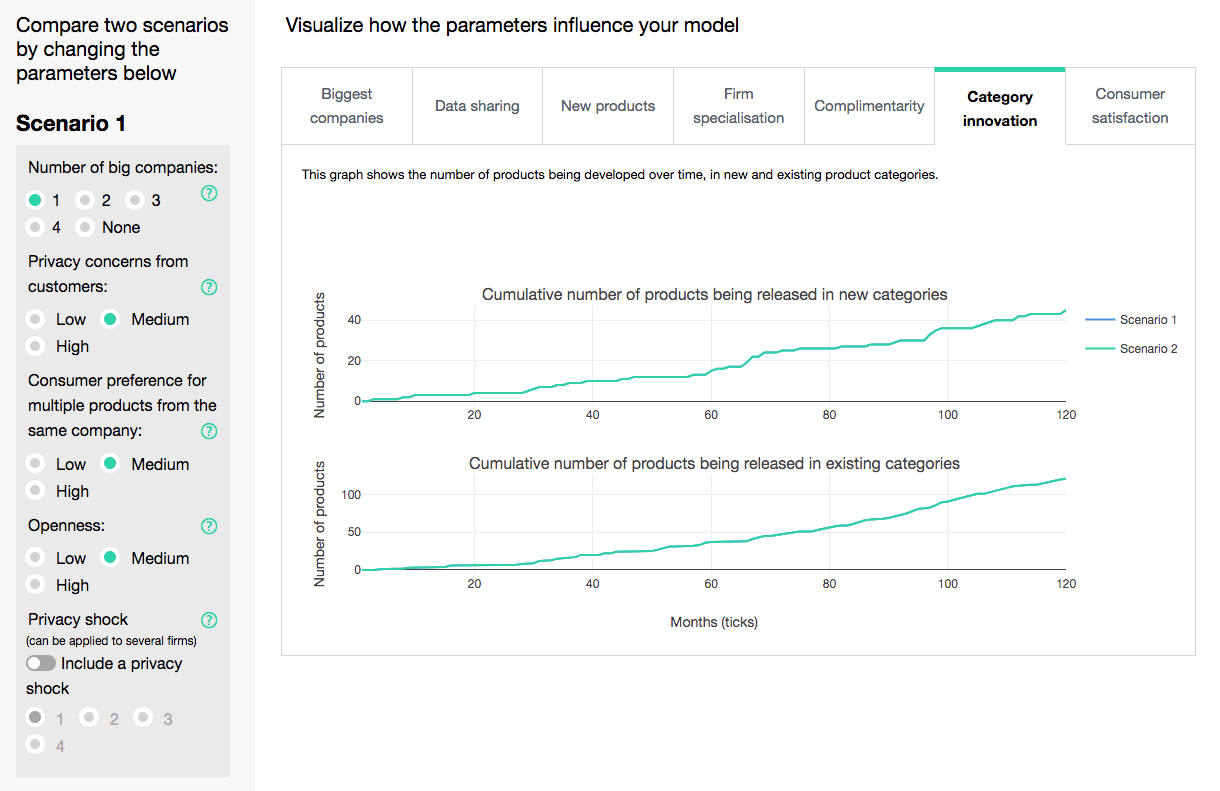
As part of our R&D project, Predicting cause and effect of data strategies, we explored how an agent-based model might be useful in modelling consumer and company behaviour when levels of data-sharing – and other variables – change. Specifically, we wanted to look at how different levels of data sharing might affect a company’s ability to create and improve products.
Data is driving economic innovation and productivity growth across the world, and its availability could have profound effects on the goods and services we use for decades to come. At the ODI, we work across the data ecosystem to help consumers, entrepreneurs, and businesses make better decisions with data, but knowing how sharing data affects their behaviour is a difficult question to answer.
Modelling interactions in the data economy
An agent-based model uses interactions between lots of people or organisations – agents – to understand what the effects of their behaviour in a given environment might be over time, and can offer a way to understand how small, individual decisions cause big changes. There are many modelling techniques available for understanding things like data sharing in an economy, but as agent-based modelling is attracting lots of interest, we wanted to explore this particular technique.
Recent increases in computing power have made it possible to develop complex models with lots of agents, giving us an opportunity to see the interactions between people, businesses, and public institutions in the data economy.
Testing theories, sharing ideas
We saw the process of building an agent-based model as an opportunity to test our theories about the data economy, and also to share our ideas with others. So, over the past six months we’ve run a workshop, interviewed experts, debated internally, and worked closely with Sandtable, a data science consultancy.
The result is a model that demonstrates our first attempt to understand how higher or lower levels of data sharing in a simple economy might affect the creation and improvement of products.
Data sharing: what impact?
Digital services for social networking, email, and many other things have become ubiquitous in the modern economy – and we wanted to see how data sharing affects classic elements of company behaviour, like their ability to create new products, improve old ones, and grow; whether small and young firms get a chance to challenge old and big ones; and the degree to which consumer needs are being satisfied.
The model allowed us to consider what might affect these things by giving us the power to change things like the privacy taste of consumers, the initial size of firms, and the amount of data openness that the companies and consumers are subject to. The degrees of data sharing provoked us to think more about whether companies are willing (or mandated) to share data and the ease of using the technology available to do so – perhaps an approximation of data portability schemes.

An illustrative model
We kept one big caution in mind as we developed the model: it was only ever meant to be illustrative and we could not use it to make predictions or guide policy decisions. We were inspired by the Blackett Review of computational modelling, and used its guidance to start with an illustrative model.
The model does not use any data, so is not tied to reality through anything more than our imagination and expert input. The model helped us to understand the data economy, but it would need to be more sophisticated and use real-world data before we could make any claims about its policy-making utility.
Ultimately, building the model has been a learning process – if you want to learn more about this you could start with our eLearning guide.
After you’ve used the e-learning guide, have a play with the model. But remember, it’s only an illustration of our ideas on data sharing in a simple economy and doesn’t use real-world data. It therefore can’t be used to make real-world predictions or policy decisions.
Our research
The links below will take you to how we have thought about the modelling process and the concepts used in it.
- How the model works with the economics of information.
- The role of combinatorial innovation in the model.
- How data portability effects play out in the model.
- What the ODI learnt about agent-based modelling.
Technical details
If you would like to get into the technical aspects of how the model runs, you can go to our Github pages, which have code and explanations for how the model and interactive app work.
Development
Once you have read the blogs and played with the model, please give us development suggestions.
Get in contact
If you would like to discuss further, or have ideas for extending this model, please contact us.